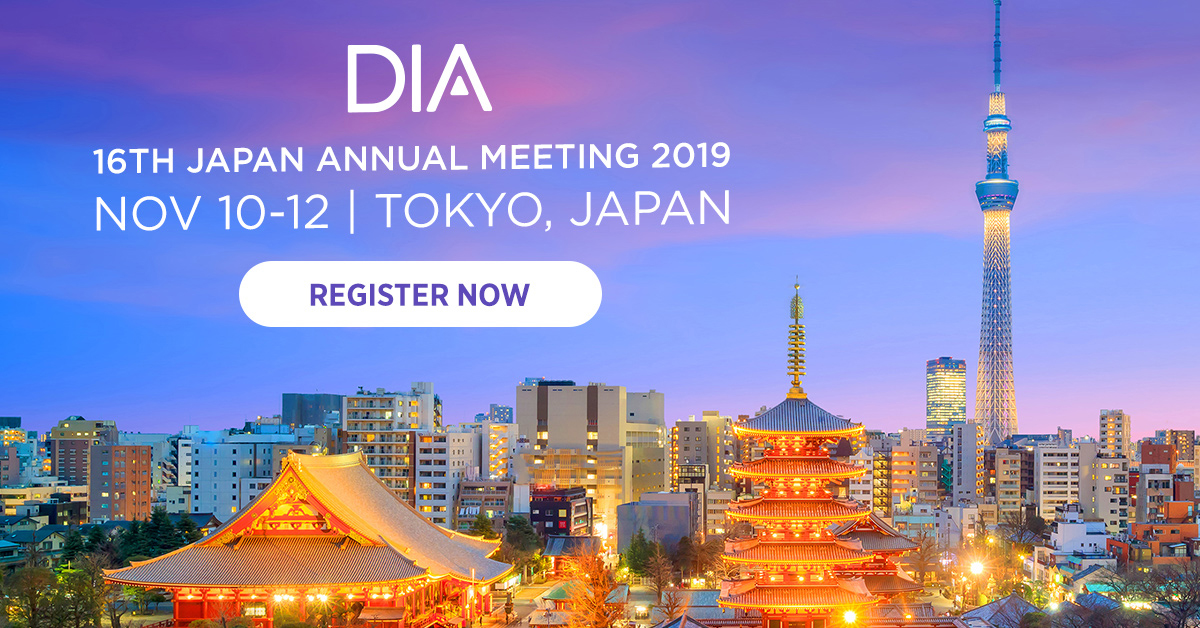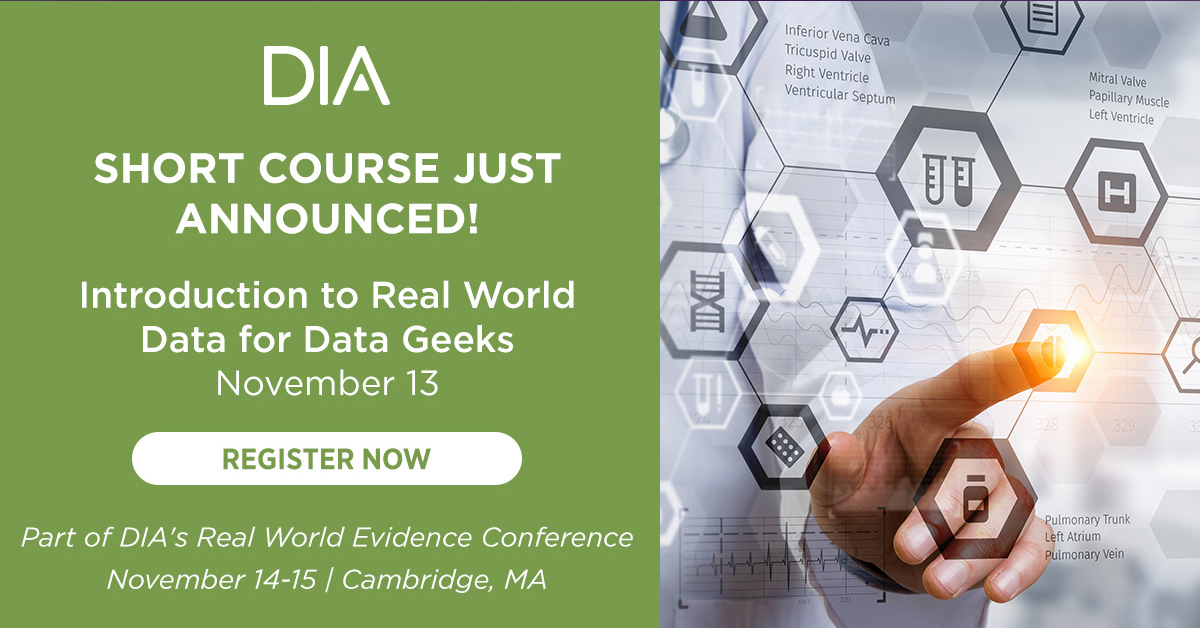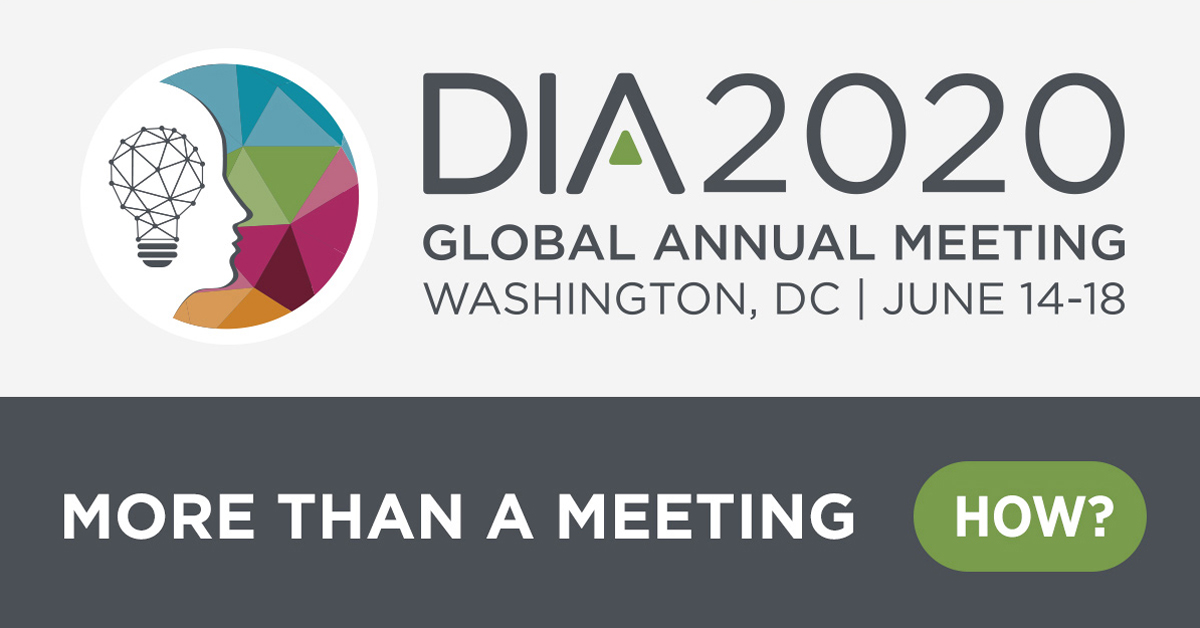October 2019 Global Forum
Table of Contents
Around The Globe
CAREER COLUMN
EXECUTIVE LEADERSHIP
Subscribe
Love Global Forum‘s new online format? Subscribe today and never miss an issue.
Editorial Board
Content stream editors
Gary Kelloff US National Institutes of Health
David Parkinson ESSA Pharma, Inc.
regulatory science
Yoshiaki Uyama Pharmaceuticals and Medical Devices Agency (PMDA)
Adora Ndu BioMarin Pharmaceutical, Inc.
Patient engagement
Deborah Collyar Patient Advocates In Research (PAIR)
Lode Dewulf Servier
Editorial Staff
Alberto Grignolo, Editor-in-Chief Parexel International
Ranjini Prithviraj, Global Associate Director, Content Collaboration DIA Publications
Sandra Blumenrath, Science Writer DIA Publications
Chris M. Slawecki, Senior Digital Copyeditor DIA Publications
Regional Editors
AFRICA
David Mukanga Bill and Melinda Gates Foundation
ASEAN
Silke Vogel Duke-National University of Singapore Medical School
AUSTRALIA/NEW ZEALAND
Richard Day University of New South Wales, Medicine, St. Vincent’s Hospital
CANADA
Judith Glennie JL Glennie Consulting, Inc.
Megan Bettle Health Canada
CHINA
Ling Su Shenyang Pharmaceutical University, Lilly Asia Ventures
Europe
Thomas Kühler Sanofi R&D
INDIA
J. Vijay Venkatraman Oviya MedSafe
JAPAN
Kazuhiro Kanmuri Inter-Professional, Inc.
MIDDLE EAST
Inas Chehimi Novartis
USA
Ebony Dashiell-Aje FDA
Young Professionals Editor
DIA Membership
Bringing together stakeholders for the betterment of global health care.
New Concepts in Cancer Therapy with Combined Radiation and Drugs
Radiation Research Program
Division of Cancer Treatment and Diagnosis
National Cancer Institute, NIH
his article focuses on new concepts in drug development related to radiation oncology and describes opportunities uniquely available to radiation sciences that reach into aspects of our world that broadly relate to human health, concluding with concepts that are beyond the more common approaches to human healthcare in the developed world.
Key Takeaways:
- Radio-chemotherapy in the era of precision medicine offers unique uses for drugs by targeting pathways such as DNA repair so that a drug might work in combination with radiotherapy when it has little efficacy by itself.
- Radiation dose should consider both the physical dose (Gray or Gy) and the molecular and biological perturbations produced by radiation. Radiation-inducible targets can make a drug effective in cell killing after radiation when it was not effective before.
- Radiation is not just “radiation,” as the type of radiation (X-ray, particles, systemically targeted radionuclide therapy [TRT]), dose, and fractionation produce different changes. Thus, the pharmacokinetics and pharmacodynamics of radiation delivery can be exploited.
- Applications of radiation science extend beyond cancer biology to space exploration, energy policy, disaster response, and healthcare to the underserved. Surprisingly impactful opportunities exist for industry.
Advancing Clinical Trial Diversity Through Community Engagement
Office of Minority Health and Health Equity
FDA
Yale Center for Clinical Investigation
Yale School of Medicine
Office of Minority Health and Health Equity
FDA
s the US population continues to grow increasingly diverse, ensuring appropriate and meaningful representation of racial and ethnic minorities in clinical trials for regulated medical products is fundamental to advancing public health. Racial and ethnic minorities have historically been and continue to be underrepresented in clinical trials and are disproportionately burdened by many chronic and debilitating diseases. Barriers to participation include a lack of trust due to historical abuses. While other barriers may be due to language and cultural differences, religion, trial design, time away from jobs and other commitments, or a lack of awareness and knowledge about what a clinical trial is and what it means to participate, all stand in the way of fuller minority representation in clinical research.
![]() Podcasts
Podcasts
How China is Changing the Clinical Development Landscape
Implications for Global Development Strategy
dMed Biopharmaceutical
dMed Biopharmaceutical
n less than 24 months, China has radically altered the global clinical development landscape, creating new pathways to commercialization that alter the traditional drug development paradigm.
In addition to making the world’s second largest market more accessible virtually overnight, the more profound impact on the industry is the way in which China’s policy revamp and emerging global role point to a new and exciting paradigm for future global clinical development and regulatory strategies.
Unlocking the Power of Safety Data with Cloud Technology
oday, the increasing number of data sources (clinical data, electronic patient health records, call center notes, medical literature articles, emails, and social media) means that there are more adverse event reports (AERs) to intake, process, and analyze for safety signal detection. Combination therapeutics, targeted medicines, and global, multi-market product launches with frequent regulatory changes keep adding layers to this information. These challenges are driving the need for drug safety organizations to more efficiently process and analyze a growing volume of complex information while continuing to meet new or evolving health authority requirements.
Around the Globe
Pharmaceutical Policy a Major Pillar in Canadian Federal Election
anadians go to the polls on October 21, 2019 to elect their Federal government representatives. The party that forms the next Federal government will determine whether planned policy initiatives focused on the pharmaceutical system will move forward. While we have covered the early stages of these initiatives in past issues of the Global Forum, the following represents the current state of key policies and their potential impact if the current Liberal government is re-elected.
![]() Podcasts
Podcasts
Around the Globe
Regulatory Environment Dynamics in the Middle East Region
Novartis Pharma Services AG
017 and 2018 were transformational years in the regulatory dynamics of the Middle East, specifically with reforms targeting the innovative molecules review process, and we have witnessed issuance of new regulations adopting the Reliance Review Model in several countries within this region.
This Reliance Model dynamic was kicked off in the Middle East region by the Saudi FDA, and was later adopted by Health Authorities in Egypt, Jordan, and the UAE.
![]() Podcasts
Podcasts
Joanna McCormack
Novartis
Brianna Devitt
Novartis
hink back to the last time you viewed a job posting. Do you remember seeing “flexibility,” “patience,” and “communication” listed as requirements for the role? While these skills are necessary in any given role, they are rarely included in a job description. They are also difficult to discern from a candidate’s cover letter or resume. Employers are increasingly seeking these abstract skills when looking for the perfect candidate.











